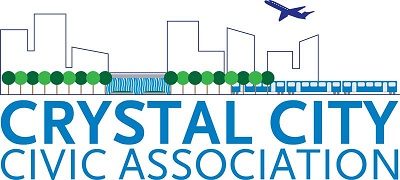On January 11, 2021, the presidents of the three civic associations in 22202–Arlington Ridge, Aurora Highlands, and Crystal City–forwarded to VDOT the Livability22202 comments on the VDOT feasibility study. These comments provide feedback to the VDOT Public Information Meeting on the Multimodal Improvements Study for Route 1 on 16 December 2020. The covering letter and the four extensive Appendices are linked here.
The Livability22202 community is vitally interested in the outcome of the study and how the principles we have enunciated in our Framework and Action Plan of November 2019 will be addressed in the final VDOT recommendations. Providing safe, convenient, connected, comfortable east-west Route 1 crossings for people of all ages and abilities and for all modes of transportation is a Livability22202 priority and the most important goal of the Working Group.
We are pleased that VDOT described that the feasibility study “aims to provide sufficient information to make the best decision on a future project on Route 1 in Crystal City” in the VDOT Public Information Meeting No. 1, December 16, 2020. And we are also pleased that the study will include both an “analysis of existing configuration and analysis of concepts presented in the Crystal City Sector Plan,” along with exploring an at-grade urban boulevard. We are also in agreement that if the study develops an understanding “of potential costs and issues/solutions for constructability and multimodal access,” the Crystal City community and Arlington County will be able to make informed decisions about the future of Route 1.
With these goals in mind, we believe that the formulation of the alternatives for consideration, and the nature of the modeling undertaken to evaluate them will be critical to the outcomes of the study. Issues will include the selection of design concepts for Route 1 as a whole, as well as concepts for individual intersections and cross streets. Assumptions in the study regarding projections for future traffic volumes, peak hour volumes, transit use, and modal splits will also be critical. Because of the importance of the existing conditions data and planning assumptions, it is important that these be shared with the public now, during the early stages of the study formulation, rather than at the end of the study, or worse, not at all. While we are aware that sharing this background information and judgments about the future requires a little more effort from your consultant team up-front, we believe that it will save time overall and build public trust in the results of the study.
The Appendices, which address our concerns and explore some of our ideas, are divided into four broad sections:
- Livability22202 Community Goals and Priorities
- Missing information and Data in the “Existing Conditions” Presentation
- Clarification of VDOT Study Concepts
- Livability22202 Alternative Concepts
